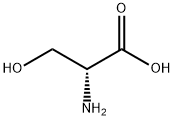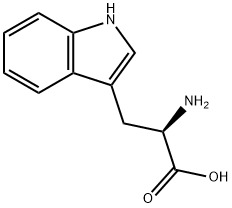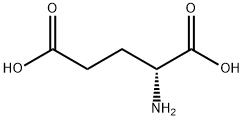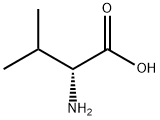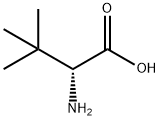D-Serine , 10mMinWater , 312-84-5
Synonym(s):
β-Hydroxyalanine;(R)-2-Amino-3-hydroxypropionic acid;Ser
CAS NO.:312-84-5
Empirical Formula: C3H7NO3
Molecular Weight: 105.09
MDL number: MFCD00004269
EINECS: 206-229-4
| Pack Size | Price | Stock | Quantity |
| 1ml | RMB159.20 | In Stock |
|
| others | Enquire |
PRODUCT Properties
| Melting point: | 220 °C |
| Boiling point: | 197.09°C (rough estimate) |
| alpha | -14.75 º (c=10 2 N HCl) |
| Density | 1.3895 (rough estimate) |
| refractive index | 1.4368 (estimate) |
| storage temp. | Keep in dark place,Inert atmosphere,Room temperature |
| solubility | H2O: 0.1 g/mL, clear, colorless |
| pka | 2.16±0.10(Predicted) |
| form | Crystalline Powder |
| color | White |
| Water Solubility | 346 g/L (20 ºC) |
| Merck | 14,8460 |
| BRN | 1721403 |
| InChIKey | MTCFGRXMJLQNBG-UWTATZPHSA-N |
| LogP | -1.490 (est) |
| CAS DataBase Reference | 312-84-5(CAS DataBase Reference) |
| EPA Substance Registry System | D-Serine (312-84-5) |
Description and Uses
Serine is one of the 20 naturally-occurring amino acids used by all organisms in the biosynthesis of proteins. Having a single chiral center, serine can exist as one of two stereoisomers (L-Serine and D-Serine).
D-serine is categorized as a nootropic. It is an amino acid found in the brain and is produced primarily in astrocytes; the conversion of L-serine to D-serine is catalyzed by the serine racemase enzyme. D-serine acts as a co-agonist of glutamate NMDA receptors and binds at the glycine site. NMDA receptors mediate synaptic plasticity, synaptogenesis, excitotoxicity, memory acquisition, and learning. Schizophrenia is characterized by reduced NMDA receptor signaling and therefore, D-serine supplementation has been tested extensively in patients with schizophrenia. It is thought to improve cognitive symptoms in this population. It is worth noting that in Alzheimer’s disease, there is excess glutamate receptor activation. Memantine, one of the drugs used to treat Alzheimer’s disease, is an NMDA receptor antagonist.
D-serine has been used as a substrate in D-amino acid oxidase (DAO) activity in human 1321N1 astrocytoma cells. It has also been used in intracerebroventricular administration in rat for the induction of antinociceptive effect.
Safety
| Symbol(GHS) |  GHS07 |
| Signal word | Warning |
| Hazard statements | H315-H319-H335 |
| Precautionary statements | P261-P271-P280 |
| Hazard Codes | Xi |
| Risk Statements | 36/37/38 |
| Safety Statements | 24/25-36-26 |
| WGK Germany | 3 |
| RTECS | VT8200000 |
| TSCA | Yes |
| HS Code | 29225000 |

